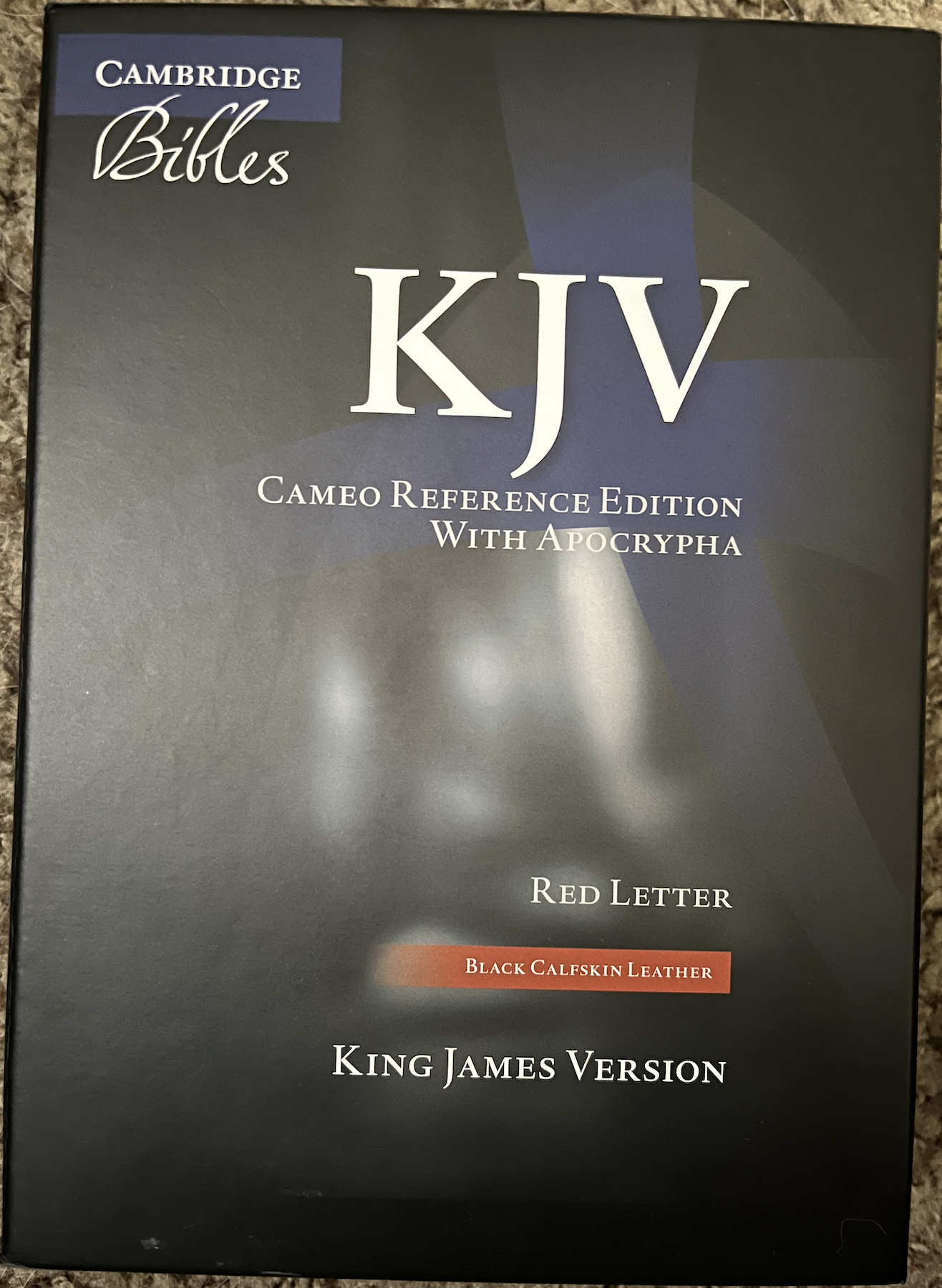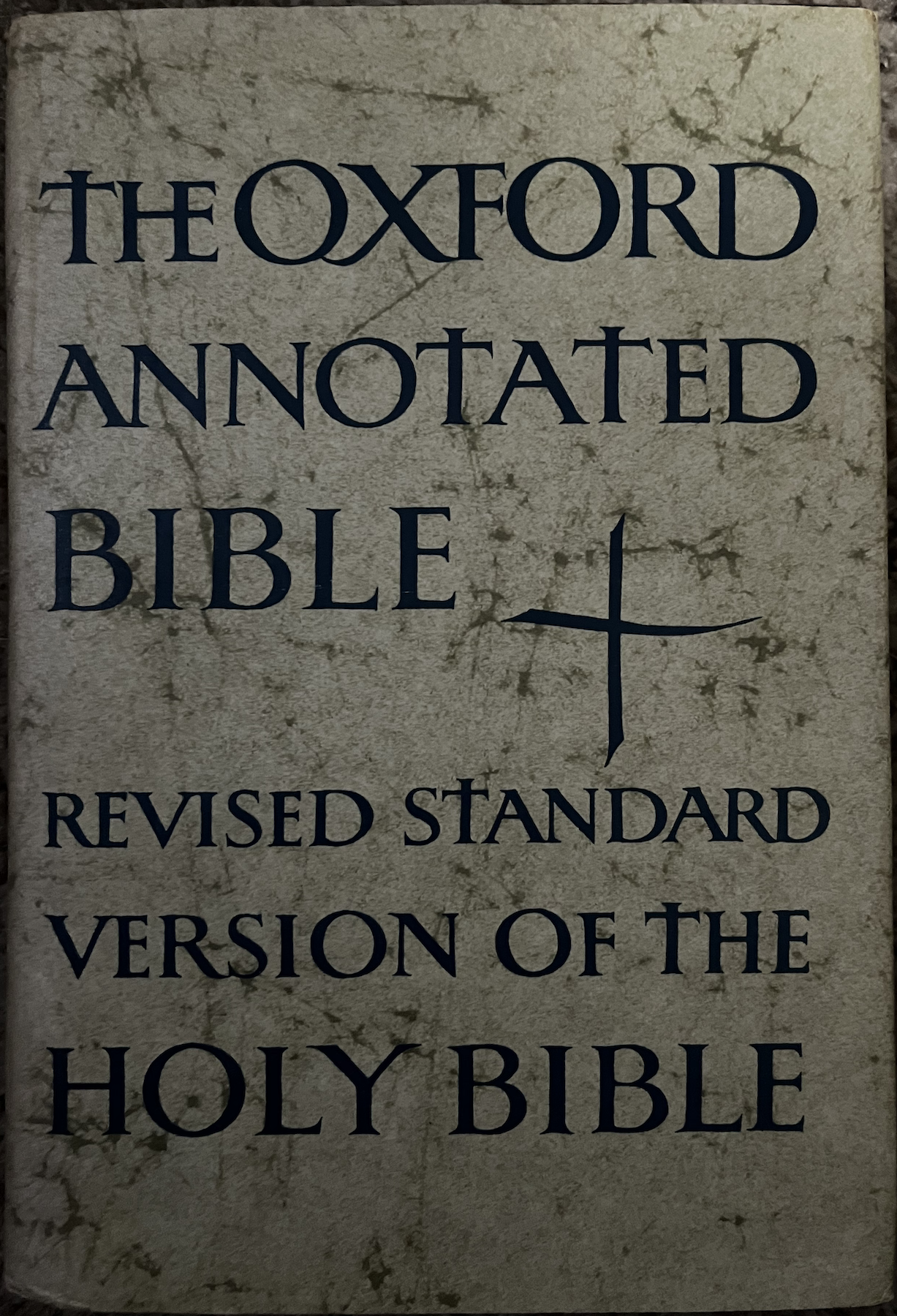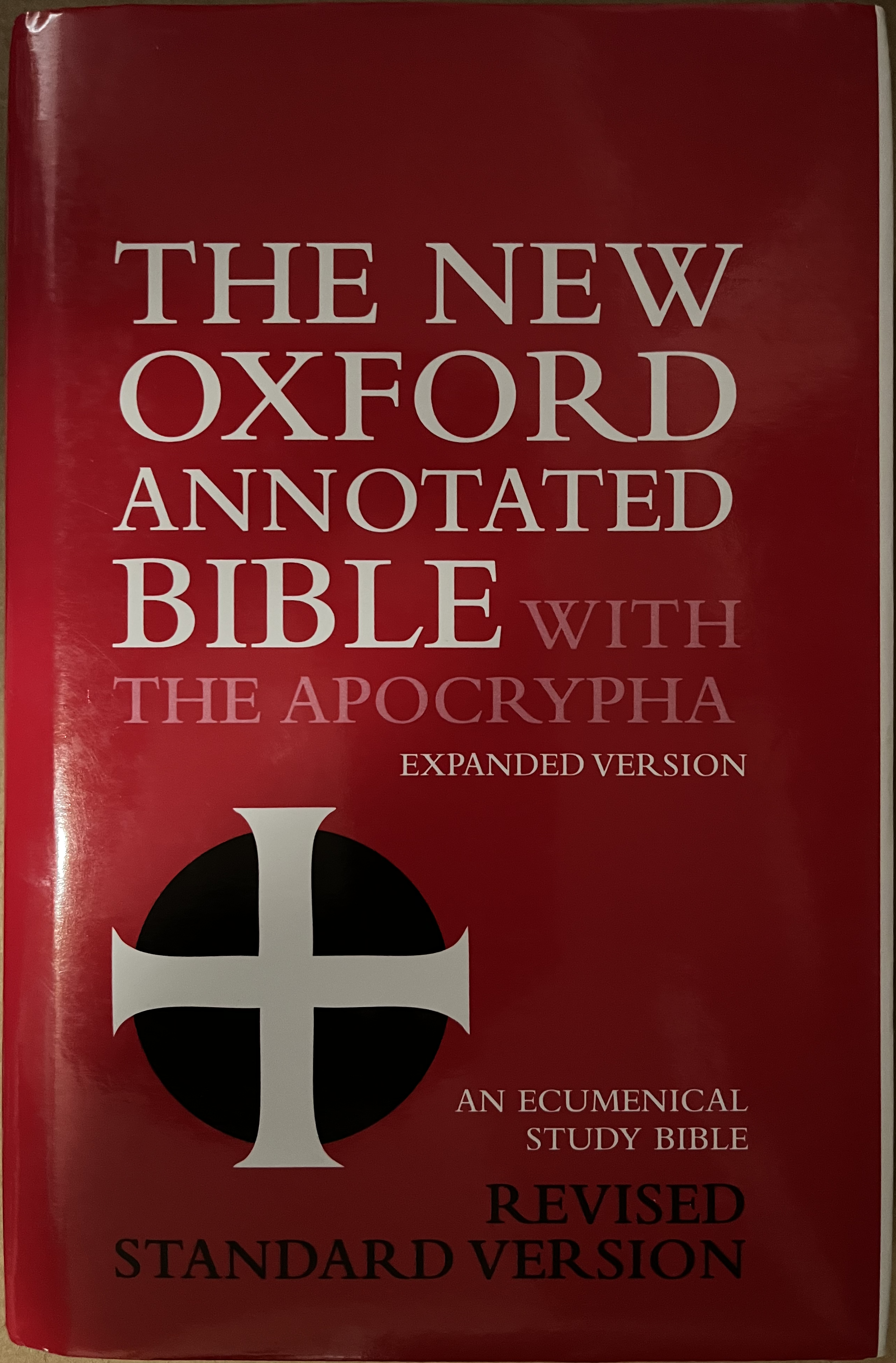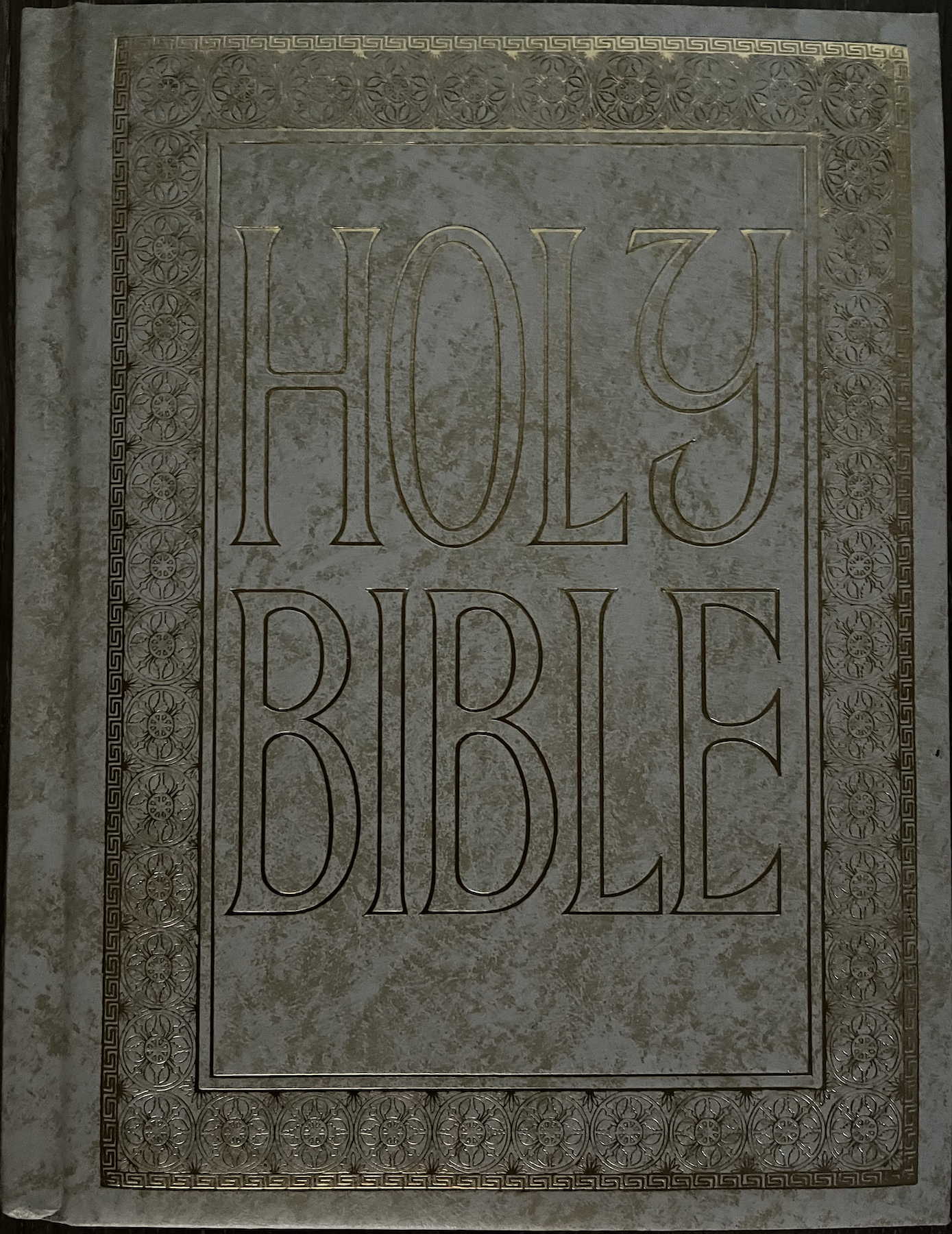I was raised Mormon (Latter-day Saint), went on a mission to Northern England and Wales at 19, then left the church of my youth, finally removing my name in 2001. I later joined The Episcopal Church, based on positive experiences with the Church of England and Church in Wales. I am a member of the Verger's Guild of the Episcopal Church, a verger at the Cathedral Church of St. Mark's in Salt Lake City, and an Education for Ministry (EfM) graduate from the School of Theology, Sewanee, University of the South.
I think I was one of those weird young missionaries that had not only read the Bible (1979 LDS edition of the Cambridge KJB), but also had read parts of Asimov's Guide to the Bible (I finished it after returning), and other commentaries both LDS (e.g. Skousen, McConkie) and not, dabbled into what other translations there were, and had a hard bound copy of the Joseph Smith Translation (though it is perhaps better called a purposeful interpolation). Why weird? Though as missionaries we were required to read the Book of Mormon, a Bible reading schedule was optional. The optional study guide I was given walked through the Bible in a year, so twice for a mission, which I followed, though it strained my hour-per-day reading alotment. I already had the habit of reading the Bible, and never wanted to stop.
This section gives notes only on those Bible editions that I've read cover to cover, and gives my thoughts on each edition. The purpose is to review the edition, but some things about the translation I'll comment on as that is relevant to the experience of the edition. This is a work in progress and will grow and fill in over time (and as I finish new editions). I intend to review other editions as I encounter them, but will add those to a section at the end for editions I haven't thoroughly read, but still own or are engaged with.
Cambridge is not always clear about the contents of their Bible printing in context to other editions they offer, though they're open to questions. There's basically two forms of KJB: text editions and reference editions. The text is in two forms: the received edition found in the Concord Reference edition (and earlier editions that preceeded it), and David Norton's restorative work found in the The New Cambridge Paragraph Bible. Reference editions include portions of the Concord supplementary materials mapped against mostly old typographical layouts. This also means that the older layouts will have older notes and references from the period of the reprint. The Clarion Reference edition is essentially a replacement of the Concord, using a modern typography, paragraphing, and layout. It is the received text, not the restored text of The New Cambridge Paragraph Bible.
The Oxford 1769 received text is the result of printing variations from the beginning in 1611 and over the years that Oxford and Cambridge has tried to correct. The Cambridge edition of the received text not identical to Oxford's. The 1769 text can be considered an actual revision of the KJB, which is part of the motivation for the formal revision of it called the Revised Version. (The other motivation is moving past the Erasmus New Testament text, as well as Beza and Stephanus, and the Bomberg Hebrew texts, to critical text editions.)
These variations are all documented in Norton's work A Textual History of the King James Bible. As a note with reference editions, the original reference notes are those of the Latin Vulgate as found in the 1602 Bishop's Bible. Where translator modifications or additions might have been made, they are not consistently printed, and referenced verse numbers are not always consistent with the verse numbering of the KJB. The references were extensively corrected, revised, and expanded by Scrivner in the original Cambridge Paragraph Bible. Numerous subtle variations and corrections exist elsewhere depending on printer and edition. These were replaced entirely in the Clarion edition. Norton points out that it is questionable whether there actually is an intended translators reference system for the KJB: instead there is the 1602 Bishop's Bible and a few references that some translators noted that could as much be marginal notes as corrections to the inherited (ultimately from the Vulgate) reference system.

I originally read an old copy of my father's 1979 edition. At 18, I bought a genuine leather, mini quad (which includes other Latter-day Saint scriptures) with a snap closure. It lasted the rigours of a mission in England and Wales.
The original work in the 1970s was done by Thomas S. Monson, Boyd K. Packer, and Marvin J. Ashton, the latter of which was replaced by Bruce R. McConkie, in conjunction with the Reorganized Church of Jesus Christ of Latter Day Saints, and Cambridge University Press. I didn't realize that Cambridge had been involved with LDS bible editions until I saw a copy of my grandmother's bible from the 1960s. The text foundation was the Cambridge Concord, where the headers and bible dictionary were used and modified, by permission of Cambridge. The rest, such as indexing and topical guide, also included work by James Talmage and others.
Recent changes in 1999/2000 and 2012 were done for the sake of the original Cambridge plates having aged. I understand the supplementary material (e.g. translator notes, dictionary, JST additions) have been extended and elaborated on, the headers updated, and some modernized spelling (introduced by David Norton's restoration work of The New Cambridge Paragraph Bible and advisement that led to the Concord itself being reset for printing in 1996, and later the Clarion edition). The image shown here is of the 2012 economy edition, given out gratis to the public, often by missionaries, which includes nothing other than the Cambridge text, LDS headers, a couple maps, and a picture of Jesus.
In general, the headers and notes present a fundamentalist biblical world view. Most of the references are to the Book of Mormon, instead of the Bible itself, though not exclusively so, with other references to the Salt Lake church's modern editions of Doctrine and Covenants and Pearl of Great Price. Joseph Smith's translation (JST) excerpts are fairly extensive in the new edition.
For members of The Church of Jesus Christ of Latter-day Saints, this is an excellent resource for the classic King James Bible in context of their other scriptures and interpretation, following the Cambridge Concord as a model, and with the 2012/2013 edition there appears to be some spelling influences from the The New Cambridge Paragraph Bible.

I have the Cameo Reference Edition With Apocrypha, Black Calfskin Leather binding. This has a paste down cover, soft leather, but with just enough stiffness to be comfortable, and not too much binding flexibility. Model and bind number is KJ544:XRA - B 1467. It is the only KJB reference edition (that I know of) that includes the Apocrypha. Unfortunately, the references in the text that point to the Apocrypha have been deleted, (these can still be found in The Interlinear Bible). If following the common 1611 prints, 102 references to the Apocrypha in the Old Testament, and 11 in the New Testament, have been removed. Of all the KJB editions I have, or have had, this one I like the most, for size, readability, and comprehensiveness.
This edition has pronunciation markings. It is a red letter edition, with darker but readable red that reminds me of my old Royal typewriter ink. It does not have the translator's preface, nor does it have the Bible Dictionary or Glossary, but does have a glossary and the traditional dedicatory to King James. This is the June 2011 print, so has the 2011 maps and map index. Along with the Turquiose, it is the second oldest layout (photo reprint?) and references/marginal notes from the 1920s (the oldest being The Interlinear Bible).

This is 1 of 600 printed by Cambridge. It is the Cameo Reference Edition, without the Apocrypha. It has a real leather (pig skin?) binding in red. The cover is embossed with King Charles III's cypher. It has gilded edges, two blue satin ribbons, and a presentation page dedicated to the coronation. It also includes a commemorative booklet supplement with pages introducing this special edition, pictures of the king as prince, a history of Cambridge as the king's printer, and a small history on the King James Bible, plus an end page with the national anthem.

The Concord is Cambridge's standard, received text up until the release in 2011 of the Clarion KJB edition. The Concord does not have the Apocrypha, is printed with the introduction from the translators to the reader and references (trimmed) from the Paragraph Bible from Scrivner, as well as the standard concordance, but also the Cambridge KJB Dictionary, and a glossary of words used differently in the 1600s vs today (or at least the 1950s). A personal size edition exists that prints a smaller red letter edition that includes the thumb index, which is printed in the 2020s using the stiffer black calf split leather, and for the personal edition French Morocco leather (which is much stiffer than that of the NRSV Reference edition or the Standard edition of the Book of Common Prayer).

The Cambridge Clarion KJB is the Concord text, informed by the typography and research of David Norton with his work on The New Cambridge Paragraph Bible. The Cambridge Paragraph Bible of the 19th century was primarily the work of Scrivner, who took the inherited Vulgate references that were transferred from the Bishop's Bible and corrected and extended them to be consistent with the verse numbering of the KJB. That edition also moved to a paragraph form, instead of individual paragraphs for each verse. In Norton's A Textual History of the King James Bible, he indicated that the translators instructions never prescribed the form the translation's publication would take, and gave certain lattitudes of typography. In Norton's going back to the original translators, it became clear the references sometimes had translator modification, but not with editorial consistency. They remained essentially as inherited from the Vulgate.
In the Cambridge Clarion KJB, the received references have been replaced with a simplified form from Nelson publishers. The glossary, concordance, and dictionary have been replaced with a dictionary that has concordance references, modified for a modern audience, doing away with some of the older commentary of the individual books as well as with the timelines. It also adopts paragraphing which appear to be, at a brief glance, from Norton's work, but perhaps actually inherited from the earlier Paragraph Bible (though perhaps that is the origin of both?). I am unsure. The received marginal notes appear to be preserved in the Clarion. Quotation marks are not used, and follow the Concord text in capitalizing the beginning of a quotation. The italics and archaic spelling of the Concord is also preserved.
This seems to be the best of breed of the KJB, if only the Apocrypha with references were available as an option. The surrounding apparatus, from the references and maps to the The Reader's Companion would make my day if it were included in a reference edition of The New Paragraph Bible, especially if the Apocrypha had something similar added. However, this is about the Clarion, and it provides an effective, modern replacement or supplement to the Concord and to the original Paragraph Bible that has long been needed. I have what appears to be the first printing in 2011, which has the older Moody press maps (and is one of the last Cambridge bibles to do so, from observation).

The Cambridge Interlinear Bible is the oldest edition of the Bible still in print by Cambridge. (The Tyndale New Testament is also available, and certainly is one of the oldest English Bibles to ever be printed.) It is the Revised Version of the Bible but without the Apocrypha. The Revised Version is the official revision of the KJB from Canterbury. The New Testament was done first in 1881, the Old Testament followed in 1885, and the Apocrypha was completed in 1895. The Interlinear includes the marginal references of the King James Bible and shows the differences between the KJB and RV for comparison. It also includes the references of The Paragraph Bible from Scrivner, which from a KJB point of view, is the only reference KJB that includes the original references to the Apocrypha. Finally, it includes the recommendations from the US translators in the back of each Testament for reference on what was used in the American Standard Version. The last edition printed in the 2020s was in soft calfskin leather as a wide margin Bible with thin pages but coated for the sake of notes. In the back are alphabetized index pages, and a notebook of line pages. Finally, the old Moody Press Bible maps, with corresponding index, are found at the end. There is no concordance or dictionary.
It's good to have the KJB in this text to compare against. Having been raised with the KJB, and expecting the readings for traditional services to be in it, especially from the British and Canadian Book of Common Prayer, I was unsure what the differences might be. For one, the Mesoretic text notes that are now found in the Biblia Hibraica are of a more modern variant than available to the KJB translators (and those that preceeded). The New Testament is based on critical texts instead of the Erasmus received text used by the KJB. This makes the RV a more scholarly edition. It also modernizes the language of the text, (see the glossary of the Concord KJB for examples) to the late nineteenth century. I had heard that the RV and the ASV had overly literal language. Instead, what I encountered was incredibly accurate language that was quite readable, illuminated obscure passages in the KJB, and all around seems like one of the best Bible translations in English, especially for those wanting traditional English perhaps for liturgical reasons. The RV was the text of the Bible used for readings in the 1928 proposed Book of Common Prayer that was sent to parliament for approval as a supplment to the 1662 edition (but rejected by parliament). It is also approved by The Episcopal Church in the US for worship. Since the existence of the Revised Version, I can't imagine a reason to stay with the KJB, which is essentially a cultural relic and icon more than a text for worship. Alas, it is mainly out of print, and I apparently have one of the last editions of the Interlinear published by Cambridge, (they still have The Interlinear Psalms available in paperback).
A Cambridge Reference Bible was printed with the Apocrypha at one point (not interlinear). In the US, Thomas Nelson & Sons published a text edition of the Apocrypha that included the marginal notes that could be used with both the RV and the ASV (though this was the original British edition, since the US translators made no comments on, or translator recommendations for, the Apocrypha that I'm aware of).

I have the 1 October 1961 hardcover edition. The original RSV came out in 1952 (the New Testament in 1946), published by Thomas Nelson. The Oxford edition contains changes from 1959, and is not identical to the earlier Nelson editions. With nearly 100 changes, it can be considered a small revision of the original, but such seems par for the course with some recent translations (e.g. NLT, ESV). The Revised Standard Version as a translation builds on the English Version (EV), and the American translation recommendations, but with a more readable, less literal, approach than English translations under the British crown and Canterbury, and using North American idiom and vocabulary. Second person archaisms are only used when referencing deity. Use of the Tudor/Danelaw speech in worship did not start until the 1970s.
This is the primary text I read with Asimov's Guide to the Bible years ago. The difference between this and the The New Oxford Annotated Bible is this has the 1946/1959 New Testament.

The RSV Apocrypha was released in 1957, and The Oxford Annotated Apocrypha was released in 1965, and expanded in 1977. The New Testament was updated in 1971. The New Oxford Annotated Bible added the updated New Testament in 1973. The leather edition continues to be released by Oxford University Press, and for genuine leather is a beautiful print and binding, which is larger than the current hard cover print. Annotations and references are at the bottom of each page, and marginal notes are included at the bottom of the text, above the annotations. Headers and color maps are included at the back along with scholarly articles.
Instead of revising the Old Testament with a second edition, the NRSV project was started. The New Oxford Annotated Bible NRSV has had five editions.

The Roman Catholic Church has a long history in English Bible translation going back to the Douay-Rheims prints in England to compete with the Matthew and Great Bible, as well as the Geneva. In the United States, this began with the Confraternity Bible in 1941. When the Vatican II council allowed for the direct translation from the Hebrew (ironic, considering the Vulgate was a direct translation from the Hebrew, not the Greek Septuagint), instead of the Latin Vulgate, this began the New American Bible project. Each new release (New Testament in 1986, Psalms in 1991, and Old Testament/Deuterocanonical books in 2008 leading to the New American Bible Revised Edition) has stopped the publication of the previous editions. The liturgy approved for use in the United States is based on a modification of the 1986 Revised New American Bible (RNAB) edition, and the Liturgy of the Hours is from the original 1970 edition, though will use the NABRE in the future.
I read the original 1970 edition, and my family Bible, the Heritage Edition is advertised as a leather edition, though I think it might be more accurate to call it a bonded leather. It includes pictures, maps, scholarly and pastoral annotations, and cross references, a dictionary at the end, as well as other documents, and red letter in the New Testament. This is a well done study Bible and translation, and of all the Bibles I've read this is my favorite translation, and one of my favorite annotated and study or reference Bibles.

Over my adult life, this is the most constant translation I've used. Though I've spent most of my time with the Oxford editions, it is the Cambridge Reference NRSV with Apocrypha that has got to be my all time favorite Bible. The Cambridge edition contains the entirety of the translation, headers, and optional cross references offered as an external option by the translation committee. It includes the Cambridge/Oxford 2011 maps and index. It also has a custom Bible Glossary from Cambridge that seems equal to the Clarion KJB Reader's Companion (see above). The paper is thicker, line matched, and not too large of a size yet very readable. The typography is excellent, with center references. This edition comes in several bindings, and the hardcover is not only well bound but surprisingly affordable.
I have the Black French Morrocco Leather edition (NR 563:XA). Other French Morrocco editions I have from Cambridge have been rather stiff and thick. This edition has a much softer and not as thick cover. There was once a rather expensive red goatskin edition, but it is out of print. If there is any criticism to offer, it is that the references do not point to the Apocrypha from the Old and New Testaments, though references to the Apocrypha exist within the Apocrypha. This seems to be par for the course at Cambridge, perhaps reflecting early editions without the Apocrypha. It is unclear whether this came that way from the National Council of Churches (NCC).
The NRSV is being phased out and will be replaced by the Updated Edition (NRSVue). Electronic editions can be got from Friendship Press, and some publishers have print editions now, such as Zondervan. Make sure to check the errata as some corrections have already been made in the text. The headers, text, and footnotes have been updated. The references from the NRSV have not though are available to publishers if they wish to include them with the NRSVue. Essentially, the NRSVue is a text edition. I'm not aware of any reference or study editions as of 2023, nor of concordances specific to it.
©2022-2023 David Egan Evans.